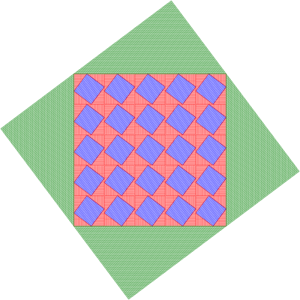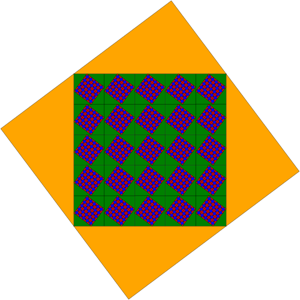My recent question about polygonal tilings where tiles can occur in infinitely many positions has been answered by two nice constructions (besides Jan Kyncl's answer, there is the Conway tessellation evoked in Robin Houston's comment), which are both of self-similar nature. For each of the positions, there are only finitely many tiles, because each step of the constructions (in terms of self-similarity: each "change of scale") involves an irrational rotation of a so far finite pattern.
So I would like to push it further by asking:
- Is there a tiling such that not only the number of positions is infinite, but that also all positions (or to start with, say just ONE position) occurs infinitely often?
Of course, for a given tile, say a pythagorean triangle, we can start with building a square that contains an arbitrary (but finite) number of different positions, then paving the plane with instances of that square repeats each position infinitely often. But this does not answer the question. As soon as self-similarity is involved, the "growth" happens in two dimensions. It does not seem possible e.g. to tile an infinite strip by some self-similar pattern.
Or is it?




